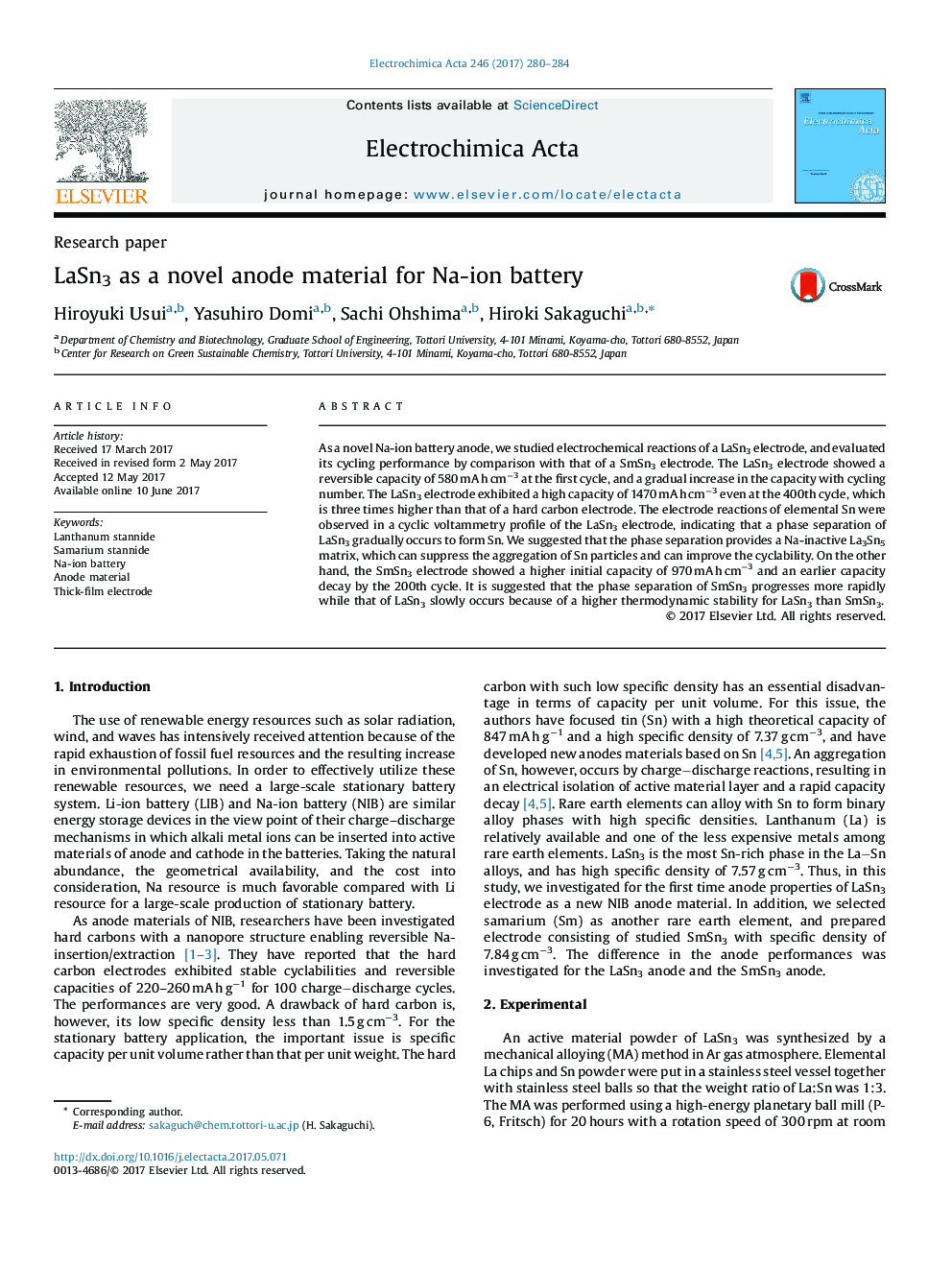| Article ID | Journal | Published Year | Pages | File Type |
|---|---|---|---|---|
| 6470448 | Electrochimica Acta | 2017 | 5 Pages |
As a novel Na-ion battery anode, we studied electrochemical reactions of a LaSn3 electrode, and evaluated its cycling performance by comparison with that of a SmSn3 electrode. The LaSn3 electrode showed a reversible capacity of 580 mA h cmâ3 at the first cycle, and a gradual increase in the capacity with cycling number. The LaSn3 electrode exhibited a high capacity of 1470 mA h cmâ3 even at the 400th cycle, which is three times higher than that of a hard carbon electrode. The electrode reactions of elemental Sn were observed in a cyclic voltammetry profile of the LaSn3 electrode, indicating that a phase separation of LaSn3 gradually occurs to form Sn. We suggested that the phase separation provides a Na-inactive La3Sn5 matrix, which can suppress the aggregation of Sn particles and can improve the cyclability. On the other hand, the SmSn3 electrode showed a higher initial capacity of 970 mA h cmâ3 and an earlier capacity decay by the 200th cycle. It is suggested that the phase separation of SmSn3 progresses more rapidly while that of LaSn3 slowly occurs because of a higher thermodynamic stability for LaSn3 than SmSn3.
Graphical abstractDownload high-res image (171KB)Download full-size image
